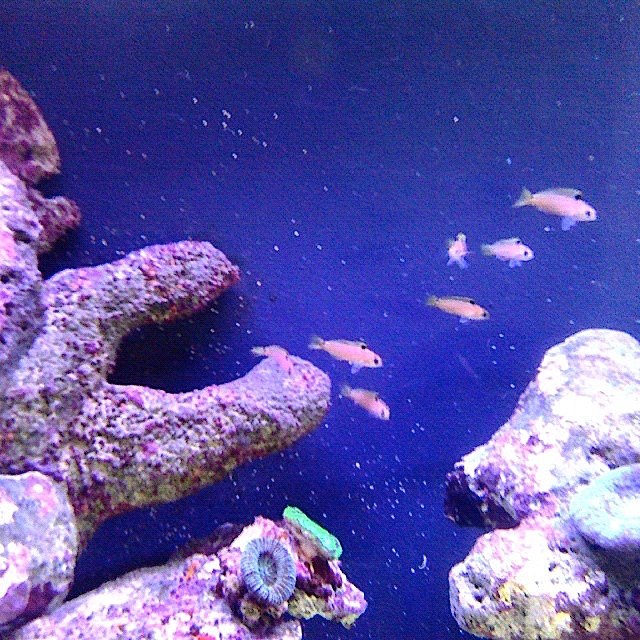To most people the Mesophotic Zone is an entirely unknown part of the ocean that very few study and even fewer have physically visited. Yet these areas are more diverse than anticipated and contain a cornicopia of life from the tiniest crustaceans to deep sea giants like 6-gilled sharks. The mesophotic zone in the open ocean is considered to be from 200m down to 1000m (600-3000ft.) where the sunlight of the surface fades throught the twilight and into the inky blackness of the deep.
In nearshore habitats the mesophotic zone ranges from 50-60m past 300m+ (150-1000ft.) because sediment, plankton, and organic matter produced by coastal habitats absorb light much more rapidly than in the crystal clear open ocean. The bathymetry of Curacao is unique with several tiers of fossil and living reef that drop off very quickly and the waters close to shore reach a maximum of 330m (1000ft.). The shallow reefs of Curacao are quite healthy and diverse but the traditional photosynthetic reef paradigm changes abruptly to a mesophotic system because of the rapid depth changes.

An amazing myriad of crabs, shrimps, snails, gorgonians, and fishes call these mesophotic habitats home, many of them are new to science. In order to classify these organisms, better understand their ecosystems, and how these systems fit into the bigger picture research is being conducted on Curacao by the Smithsonian Institute, Substation Curacao, and the Curacao Sea Aquarium. The depths and pressures associated with these habitats make it extremely difficult to study them using traditional means and technical diving involves serious risks.
A specialized research submersible is a key tool in collecting new specimens from the depths and bringing them to the light where researchers can study them more in depth. The research is amazing but the true reach of this project is brought home with the living displays of mesophotic fishes and invertebrates at the Curacao Sea Aquarium.

Below you can watch a short teaser video from the inside of an aquarium of deepwater fishes including Pugnose Bass (Bullisichthys caribbeus), Heliotrope Bass (Lipogramma klayi), and Banded Basslets (Lipogramma evides). These fishes are all from depths of 70m (230ft.) down to 155m (500ft.) and went through an extensive decompression and accilmation process before landing in the display tank. Many of the mesophotic fishes collected by the Smithsonian and Substation Curacao are predators on small crustaceans, mollusks, and zooplankton which is fortunate for the husbandry team because they readily accept live mysis shrimp.

The fish you will see in the video have been residing in the system for 2 months now and are the first wave of many more deep water gems yet to come. This system will be populated with stars like the Candy Bass (Liopoproma carmabi), Golden Bass (Liopoproma abberans), Deep Sea Red Hogfish (Decodon puellaris), Walleye Bass (Serranus luciopercanus), Apricot Bass (Plectranthias garrupellus), and all sorts of deep sea Anthias and their kin.
This is just the tip of the iceberg . . or coral head? I promise to have a witty analogy next time. Suffice to say the deep sea research being conducted on Curacao is shining new light onto a previously unknown region of the abyss and the results are golden indeed. For more information about the Smithsion Institute, DROP Project, and related research you should visit the Smithsonian Ocean portal.
This has been a guest contribution from Joe Oliver, a resident Marine Biologist for the Curacao Sea Aquarium and Substation Curacao.



